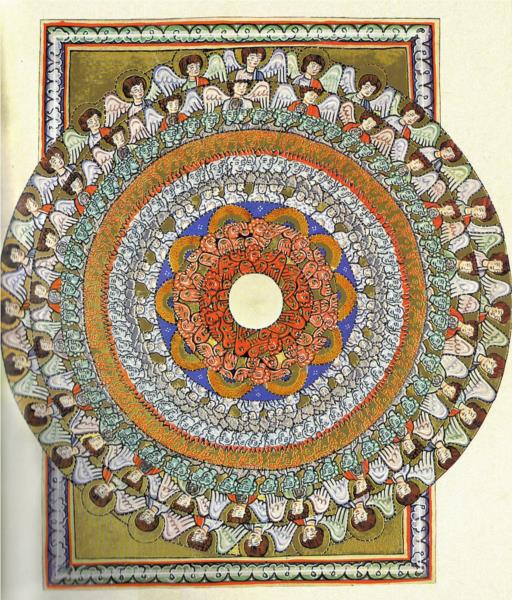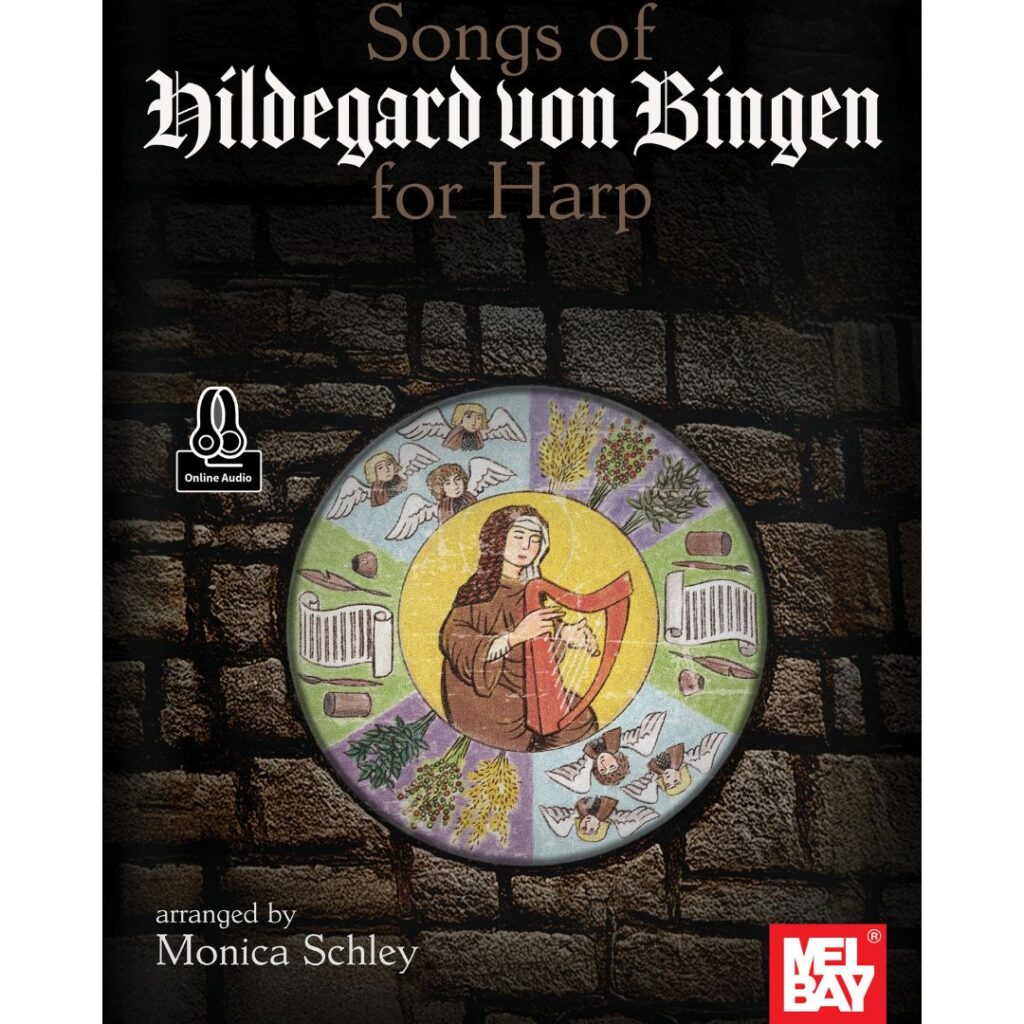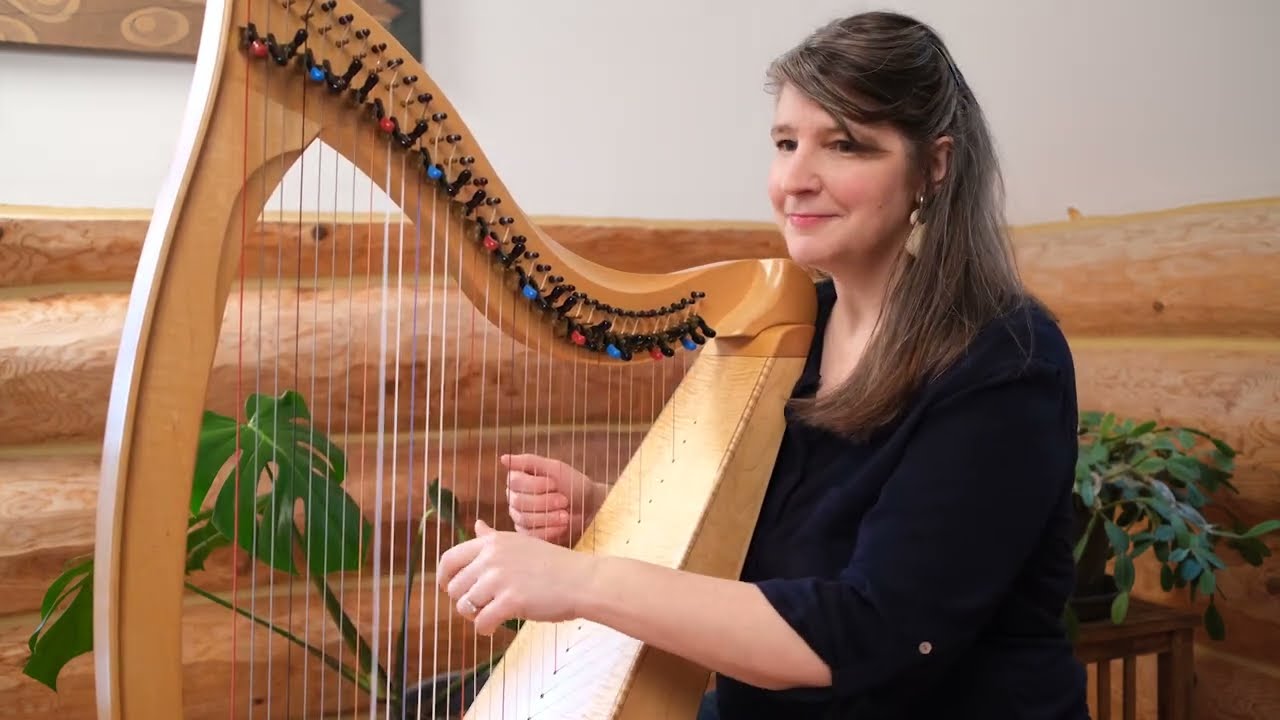this article is published in April 2025 issue of Musicland, newsletter of the Musicians Association of Seattle
Many musicians, especially those who have taken music history classes and read sheet music, are aware of who Hildegard von Bingen was. I was first introduced to Hildegard’s music as a teenager by my organ teacher, when I was playing for mass. Fast forward a few years, and I went to university where I heard about her again (in music history). I even ended up writing a paper on her. Thirdly, I came across Hildegard’s music when I played harp in hospital and hospice as a Certified Clinical Musician.
Who Was Hildegard von Bingen?
Hildegard von Bingen lived from 1098-1179 in Germany during the Middle Ages, at a time when education and literacy were controlled by the Catholic Church. Hildegard was “given” as a tithing to the church, not an uncommon practice of the time. When she was 14, she was sent to live a life of religious devotion in Disibodenberg.
At the convent, Hildegard prayed, wrote, and only had access to the outside world through the view of a single window. Despite her claim of lacking formal training in either the Latin language or music, Hildegard produced songs that were equal to those written by the most admired men of the Middle Ages. A woman of letters, she often communicated directly with clergy of the church, including Pope Eugene III, who encouraged her to continue writing music and poetry. She went on to write several books about religion, art, politics, philosophy, science, medicine, and herbs. By today’s standards she was a polymath: a mystic, a healer, an artist, a writer, and a scientist.
Learning How to Publish a Book of Sheet Music
A millennium after her living on Earth, we still hear her music being played. Most often, you can find her songs as the vocal motets she originally wrote them as. Yet still, I was surprised that sheet music for Hildegard’s music was not easy to find.
What I did find, by visiting both Seattle Public Library and King County Public Library archives, was a publishing house called simply: Hildegard Publishing. They put out transcriptions of Hildegard’s music in the 1980’s and 1990’s and helped make her songs more readable from the Medieval-written diamond-shaped neumes, to become modern looking notation. They appeared as high vocal music: in treble clef with lyrics (in Latin). However, they still lacked meter, chord progressions, and harmonies.
I decided to take a hand at what I thought was missing. I was learning how to publish a book of sheet music. I began with her song “O Frondens Virga” (O Flowering Frond). This was the first of her songs I had learned.
Once I did a few of these tunes, I realized there was something there. I felt rather called to make these songs available to other musicians. In doing so, I found out that students like playing this music, and audiences liked listening to this music. I transcribed a few more songs (with the help of listening to recordings, finding other people’s arrangements, and experimenting with what I thought where pretty harmonies and melodies). Next, I reached out to Mel Bay Publications. For the past 75 years, they have specialized in instructional lesson books and all things original and public domain. My samples were approved and I had one year to complete a book.
Inspiration for the Cover
I feel grateful to have a newly published book of sheet music called “Songs of Hildegard von Bingen for Harp.” I’m happy with the cover as well, which my husband Stephen Schildbach illustrated based off of one of Hildegard’s mandala-esque paintings, “Visions of the Angelic Hierarchy.” Mel Bay’s model is to also include audio recordings with each song (available with the book as both print and PDF). I’m really happy with how the recordings I did turned out. Later this year, I’ll be releasing them as an album on all streaming platforms. For now, you can hear some of the songs on my YouTube channel.

I’ve also been promoting the book in person. I just participated in a conversation/panel at the National Nordic Museum called “Medieval Joy” moderated by a Seattle University history professor. In May, I’ll be both playing and leading a workshop at Folklife Festival (May 24 and 26). In June, I’ll be playing and presenting at Folio, a new library and cultural space in Pike Place Market (June 27). You can purchase the book of sheet music or find out about upcoming concert dates on my homepage at: monicaschley.com

